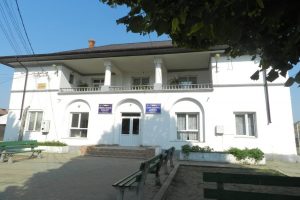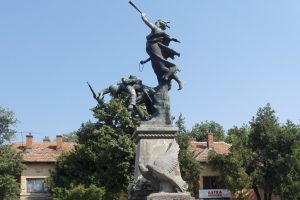

The historical data certify the fact that in the XIVth century here there was a small wooden church built up by Mircea the Elder after a victory at Rovine.
The current place of worship was built up between the years 1654 – 1658 and it is the second stone church, as antiquity, from the area of Craiova. There are more documents which would suggest the fact that the monastery existed at the beginning of the XVIth century. A document from the 6th of June 1607 shows the fact that the Jimnic village near the monastery is sold to the great ban Preda Buzescu for twenty thousand silver coins, which are given to the place of worship. Another document from the 8th of October 1612 shows the fact that Maria Stolniceasca gives a card to the Jitianu monastery through which it gives it a gipsy shelter.
The historian Nicolae Iorga mentions it in the “Inscriptions”, as founder of the old monastery from the beginning of the XVIth century, as the high steward Jițianu. From other documents, it was determined the fact that starting with the 12th of May 1613 the monastery Jitianu had over half of the village Jimnic, and on the 7th of November 1616, Alexandru Iliaș Voievod exempts from the payment of dues and revenues part of the village Jimnicu which was owed by the monastery. On the 16th of April 1625, the monastery Coșuna sells to the monastery Jitianu the part of the land with eight thousand silver coin ducats.
The historical data say the fact that the monastery’s founders are the nobles Craiovești – Banoveți (Barbu, Radu, Pârvu, Danciu) because of the fact that it was under the caring of the descendants of the Craiovești: Radu Șervan, Constantin Brâncoveanu and even Ștefan Cantacuzino. From other documents it results the fact that before the lady Bălașa, there are found mentioned and founders of the place of worship the nobles Bengești and Maria from Obede (Obedeanu), these were buried at the monastery.
The current monastery was built between the years 1654 – 1658 from the order of Miss Bălașa, who was the wife of the regnant Constantin Șerban Basarab. It was finished in 1701 by the father superior Popa Luca from Stefagora and by Petru Obedeanu, who was a great vizier. According to an inscription of 1731, in the same time there were painted the porch and the cells. Other reparations were made in 1812, by the Archimandrite Dorotei Craioveanul and 1856, when it was restored and the painting about which there aren’t any other data.
After the secularization of the monastery’s fortunes of 1864, at Jitianu there wasn’t anymore a monastic life. Between the years 1864 – 1873 here functioned an agriculture school, which was moved at Herăstrău (today in Bucharest).
The place of worship remained ast the congregation church of the village Balta Verde, by the year 1914, when the church was closed because of the fact that it arrived in an advanced state of deterioration.
Between the years 1925 – 1932, the Commission for Historical Monuments, also helped by the church-goers from the area, it repaired the church, without bringing it any essential alterations. After 1939, the monastery was occupied by the nuns. They built the current cells, and they have founded the weaving mill workshops, seaming and carpets. They also built up the household constructions.



